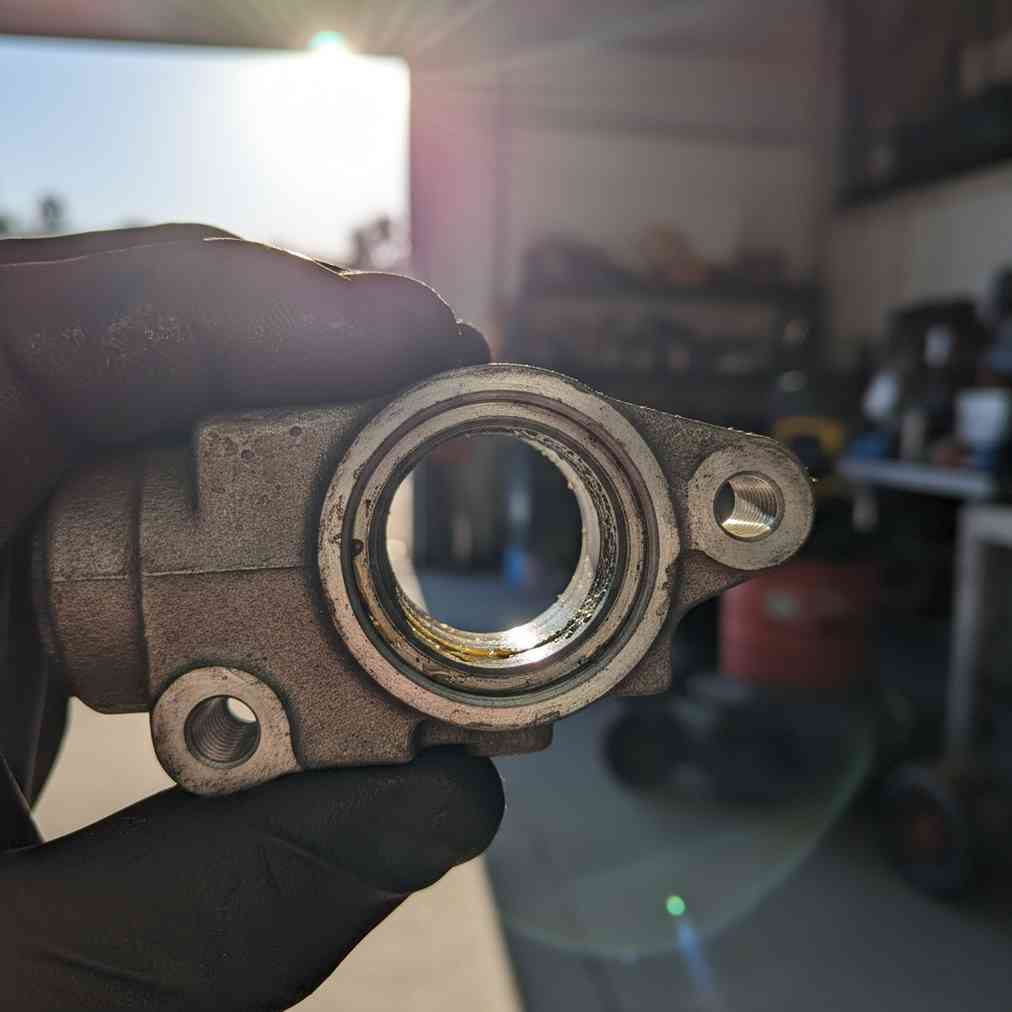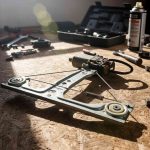Understanding the Critical Role of Your Vehicle’s Master Cylinder
The brake master cylinder serves as the control center for your vehicle’s hydraulic braking system, making it one of the most critical safety parts in any car or truck. When considering purchasing a used master cylinder from a junkyard near me, understanding its function and knowing what to inspect becomes essential for maintaining your vehicle’s safety.
This vital part converts the mechanical force from your foot pressing the brake pedal into hydraulic pressure that ultimately stops your vehicle. The process involves several key steps that work seamlessly together to provide reliable braking power.
How the Master Cylinder Functions
- Force Conversion: When you press the brake pedal, a pushrod moves pistons inside the master cylinder
- Pressure Generation: This piston movement pressurizes brake fluid within the cylinder
- Pressure Distribution: Generated hydraulic pressure transmits through brake lines to calipers or wheel cylinders
- Braking Action: This pressure forces brake pads against rotors or shoes against drums, creating stopping friction
Modern vehicles typically use tandem master cylinders with dual circuits, ensuring that if one circuit fails, braking power remains available on at least two wheels for enhanced safety.
Severe Risks of Master Cylinder Failure
A failing master cylinder can create extremely dangerous driving conditions that put you, your passengers, and other road users at serious risk. Understanding these risks helps emphasize why thorough inspection of used parts is crucial.
- Reduced Braking Power: Internal leaks prevent adequate hydraulic pressure buildup, resulting in longer stopping distances
- Complete Brake Loss: Severe failures can result in total loss of braking ability
- Spongy Brake Pedal: Air or fluid bypassing worn seals creates a soft, unreliable pedal feel
- Brake Fluid Loss: External or internal leaks reduce system effectiveness and can lead to complete failure
According to automotive safety research, brake system failures account for a significant percentage of vehicle accidents, making proper inspection of these critical safety parts essential for any driver considering used auto parts.
Comprehensive Inspection Checklist for Used Master Cylinders
When purchasing a used master cylinder, conducting a thorough inspection requires both visual examination and functional testing. Since internal problems aren’t always visible from the outside, this systematic approach helps identify potential issues before they become safety hazards.
| Inspection Area | What to Check | Red Flags for Rejection |
|---|---|---|
| Fluid Reservoir | Cracks and contamination in plastic housing | Visible cracks, dark/cloudy/gritty fluid indicating moisture and debris contamination |
| External Seals & Body | External leak evidence around cylinder body and fittings | Wet spots, drips, or oily residue around mounting points and vacuum hose connections |
| Bore/Housing | Metal parts for corrosion or pitting | Rust spots, white deposits, cracks, nicks, or scoring on cylinder surfaces |
| Functional Testing | Internal leak detection through pedal testing | Brake pedal slowly sinking under steady pressure indicates internal seal failure |
| Fluid Level Behavior | Fluid level changes during pedal operation | Rising fluid level when pedal is depressed suggests internal leakage |
| Fittings & Connections | Secure, clean brake line connections | Corroded, stripped, or loose fittings that can cause external leaks |
Visual Inspection Techniques
Start your inspection by examining the fluid reservoir for any visible cracks or fractures in the plastic housing. Contaminated brake fluid appears dark, cloudy, or contains visible particles, indicating internal seal wear and potential corrosion problems.
Look carefully for external leak evidence around the cylinder body, mounting points, and where it connects to the brake booster. Brake fluid typically has an oily consistency and leaves distinctive residue marks. Pay special attention to the inside of any vacuum hose connected to the booster, as fluid here indicates a serious leak past the primary piston seal.
Testing for Internal Leaks
The most reliable method for detecting internal leaks involves the sinking pedal test. With the engine off, pump the brake pedal several times until it feels firm, then maintain steady pressure for at least one minute. If the pedal slowly sinks toward the floor under constant pressure, this indicates internal leakage past the piston seals.
Another effective test involves observing fluid level behavior. Remove the reservoir cap and press the brake pedal while watching the fluid level. If the brake fluid level rises when the pedal is depressed, this suggests the master cylinder has developed an internal leak.
Critical Warning Signs to Avoid
Certain conditions in a used master cylinder should immediately disqualify it from consideration, regardless of price or availability. These warning signs indicate potential safety hazards that could lead to brake system failure.
- Severe Corrosion: Rust spots, white powdery deposits, or pitting on metal surfaces compromise seal integrity
- Cracked Housing: Any visible cracks in the cylinder body or reservoir indicate structural failure
- Scored Bore: Scratches or gouges in the cylinder bore prevent proper seal function
- Contaminated Fluid: Dark, gritty, or separated brake fluid suggests extensive internal damage
- Missing Parts: Absent caps, seals, or fittings may indicate improper removal or storage
Professional mechanics often recommend against purchasing used master cylinders due to their critical safety function and the difficulty of thoroughly testing internal seals without installation. However, understanding these inspection techniques can help you make informed decisions when selling your junk car or evaluating used parts.
Professional Testing Methods
Beyond visual inspection, several testing methods can help evaluate a used master cylinder’s condition. These techniques require some mechanical knowledge but provide valuable insights into the part’s functionality.
Bench Testing Procedures
If possible, conduct a bench test by connecting the master cylinder to a pressure gauge and manually operating the piston. This test reveals internal leakage that might not be apparent during visual inspection. Look for consistent pressure buildup and maintenance without significant drops over time.
Check all brake line fittings for proper thread condition and sealing surfaces. Stripped or damaged threads can cause external leaks that compromise system pressure and create safety hazards.
“The brake master cylinder is not a part where you want to compromise on quality or condition. Even small internal leaks can lead to complete brake failure under emergency braking conditions.” – Automotive Safety Institute
Storage and Environmental Factors
Environmental exposure significantly affects master cylinder condition, especially in salvage yard environments. Understanding how storage conditions impact these critical safety parts helps evaluate their reliability.
- Moisture Exposure: Extended exposure to humidity can cause internal corrosion and seal deterioration
- Temperature Extremes: Freezing and thawing cycles can damage rubber seals and metal surfaces
- Contamination: Dirt, debris, and other contaminants can compromise seal surfaces and bore integrity
- Fluid Degradation: Old brake fluid becomes corrosive and can damage internal parts over time
Quality salvage yards often store brake system parts in covered areas and may drain fluids to prevent contamination. When possible, inquire about storage conditions and the length of time since removal from the donor vehicle.
Cost-Benefit Analysis of Used Master Cylinders
While used master cylinders can offer significant cost savings compared to new units, weighing the potential risks against savings becomes crucial for safety-critical parts. Consider these factors when making your decision:
| Advantages | Disadvantages |
|---|---|
| Significant cost savings (50-70% less than new) | Unknown service history and wear patterns |
| Immediate availability for older vehicles | Limited or no warranty coverage |
| OEM specifications and fitment | Potential for hidden internal damage |
| Environmentally responsible recycling | Safety risks from unexpected failure |
Many automotive professionals recommend rebuilding services as a middle-ground option, combining cost savings with restored reliability. Rebuilt master cylinders undergo professional reconditioning with new seals and testing procedures.
Installation and Safety Considerations
Even a thoroughly inspected used master cylinder requires proper installation procedures and complete system testing before returning the vehicle to service. Critical installation steps include:
- Complete System Bleeding: Remove all air from brake lines and ensure firm pedal feel
- Brake Fluid Replacement: Install fresh, manufacturer-specified brake fluid throughout the system
- Pressure Testing: Verify system holds pressure under load without leakage
- Road Testing: Conduct controlled testing in safe conditions before normal operation
Professional installation and testing provide additional safety assurance, especially for vehicles used in demanding conditions or carrying passengers regularly. The investment in proper installation often justifies itself through improved reliability and peace of mind.
Making the Final Decision
Purchasing a used master cylinder requires careful consideration of safety, cost, and reliability factors. While thorough inspection techniques can identify many potential problems, the critical nature of brake system function means that any uncertainty should favor caution over savings.
Consider alternatives such as rebuilt units, remanufactured parts, or quality aftermarket options that may provide better reliability assurance while still offering cost advantages over new OEM parts. Remember that brake system failure can have catastrophic consequences that far outweigh any initial cost savings from questionable used parts.
When in doubt, consult with qualified brake system specialists who can provide professional assessment and recommendations based on your specific vehicle and driving requirements. For additional insights on automotive safety and maintenance, educational resources can provide valuable supplementary information for making informed decisions about critical vehicle safety systems.





Leave a Reply
You must be logged in to post a comment.